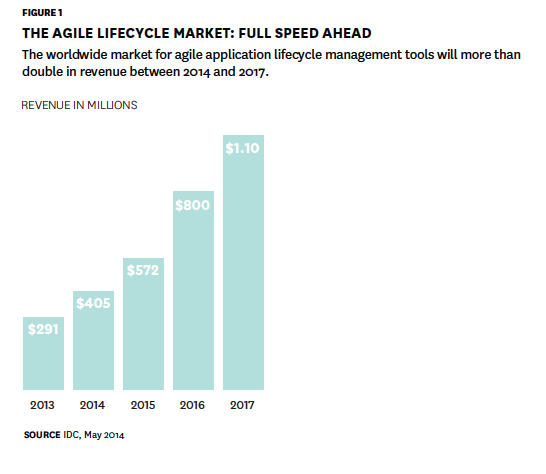Agile Practice: The Competitive Advantage for a Digital Age | Harvard Business Review
Agile Practice: The Competitive Advantage for a Digital Age
By: Harvard Business Review
Agile development practices have steadily risen to become a trusted and preferred method of development for software teams everywhere. Using agile, organizations can respond to market changes faster, deliver higher quality software, and gain a significant competitive edge.
In today’s competitive business environment, software development is increasingly driven by the focused needs of customers and businesses, both of whom require rapid response to their issues and concerns. Feedback must be immediately incorporated into products and engineering teams must be able to deliver the exact product their customer is looking for, on time and before a competitor does.
With so much at stake, it’s no longer acceptable for CIOs to plan technology projects on an annual basis or to wait months for solutions to be developed. Instead, IT shops are under the gun to build software in much faster iterations. “Technologies such as cloud are fueling the demand for continual experimentation and rapid refresh rates for many applications;’ says analyst Jeff Kaplan, principal at THINK Strategies.
That’s quite a paradigm shift from a few years ago when development was largely the domain of the development department, often working at a more measured pace on large-scale ERP ini tiatives and other enterprise projects.”Things are moving so fast and users are so much savvier these days that we need to find ways of not only shortening the time to market, but also creat ing applications that better fit business needs;’says Paul Gartner, vice president, software engi neering at National Geographic. “I’ve run across a lot of projects in the past where you are given requirements and come back six months later with an application, only to find that it’s not what the business wanted at all:’
In response, IT groups in multiple industries are now using agile practices to accelerate devel opment and respond to change. For many, running in a more agile fashion represents a compet itive advantage that delivers benefits from improved software quality and team productivity to lower costs. For example, Tom Paider, associate vice president, build capability, at Nationwide
Insurance, says that software defects across the enterprise have dropped by so percent each
year since 2009. At the same time, application development staff productivity has increased by
60 percent overall.



